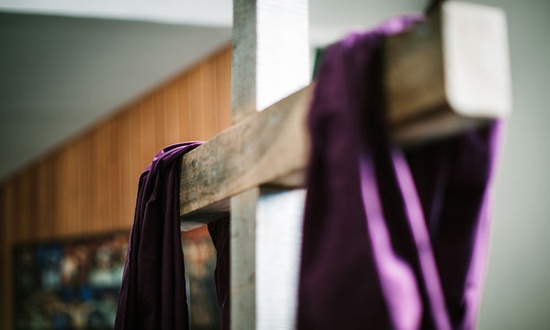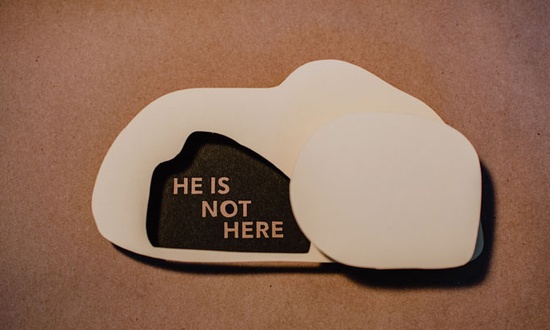In 1 Corinthians 15:17-19, Paul says that if Christ hadn’t risen from the dead, we’d still be in our sins—meaning we’d be bound for Hell, not Heaven: “If Christ has not been raised, your faith is futile; you are still in your sins. Then those also who have fallen asleep in Christ are lost. If only for this life we have hope in Christ, we are to be pitied more than all men.”
He doesn’t just say that if there’s no Heaven, the Christian life is futile. He says that if there’s no resurrection of the dead, then Christianity’s hope is an illusion and we’re to be pitied for placing our faith in Christ. Paul has no interest in a Heaven that’s merely for human spirits.
Wishful thinking is not the reason why, deep in our hearts, we desire a resurrected life on a resurrected Earth instead of a disembodied existence in a spiritual realm. Rather, we desire it precisely because God intends for us to be raised to new life on the New Earth. It is God who created us to desire what we are made for. It is God who “set eternity in the hearts of men” (Ecclesiastes 3:11). It is God who designed us to live on Earth and to desire the earthly life. And it is our bodily resurrection that will allow us to return to an earthly life—this time freed from sin and the Curse.
“Therefore, if anyone is in Christ, he is a new creation; the old has gone, the new has come!” (2 Corinthians 5:17). Becoming a new creation sounds as if it involves a radical change, and indeed it does. But though we become new people when we come to Christ, we still remain the same people.
Conversion is a blend of change and continuity. When I became a Christian as a high school student, I became a new person, yet I was still the same person I’d always been. My mother saw a lot of changes, but she still recognized me. She said, “Good morning, Randy,” not “Who are you?” I was still Randy Alcorn, though a substantially transformed Randy Alcorn. My dog never growled at me—he knew who I was.
Likewise, this same Randy (who is now very different) will undergo another change at death. And I will undergo yet another change at the resurrection. But through all the changes I will still be who I was and who I am. There will be continuity from this life to the next. I will be able to say with Job, “In my flesh I will see God; I myself will see him with my own eyes—I, and not another” (Job 19:26-27).
Conversion involves transforming the old, not eliminating it. Despite the radical changes that occur through salvation, death, and resurrection, we remain the unique beings that God created. We have the same history, appearance, memory, interests, and skills. This is the principle of redemptive continuity. God is not going to scrap his original creation and start over. Instead, He will take His fallen, corrupted children and restore, refresh, and renew us to our original design.
If we don’t grasp the principle of redemptive continuity, we cannot understand the nature of resurrection. “There must be continuity,” writes Anthony Hoekema, “for otherwise there would be little point in speaking about a resurrection at all. The calling into existence of a completely new set of people totally different from the present inhabitants of the earth would not be a resurrection.”
First Corinthians 15:53 says, “The perishable must clothe itself with the imperishable, and the mortal with immortality.” This (the perishable and mortal) puts on that (the imperishable and immortal). Likewise, it is we, the very same people who walk this Earth, who will walk the New Earth. “We will be with the Lord forever” (1 Thessalonians 4:17, emphasis added).
The empty tomb is the ultimate proof that Christ’s resurrection body was the same body that died on the cross. If resurrection meant the creation of a previously nonexistent body, Christ’s original body would have remained in the tomb. When Jesus said to His disciples after His resurrection, “It is I myself,” He was emphasizing to them that He was the same person—in spirit and body—who had gone to the cross (Luke 24:39). His disciples saw the marks of His crucifixion, unmistakable evidence that this was the same body.
Jesus said, “Destroy this temple, and I will raise it again in three days” (John 2:19). John clarifies that “the temple he had spoken of was his body” (v. 21). The body that rose is the body that was destroyed.
In its historic crystallization of orthodox doctrine, the Westminster Larger Catechism (1647) states, “The self-same bodies of the dead which were laid in the grave, being then again united to their souls forever, shall be raised up by the power of Christ.” The Westminster Confession, one of the great creeds of the Christian faith, says, “All the dead shall be raised up, with the self-same bodies, and none other.” “Self-same bodies” affirms the doctrine of continuity through resurrection.
This, then, is the most basic truth about our resurrected bodies: They are the same bodies God created for us, but they will be raised to greater perfection than we’ve ever known. We don’t know everything about them, of course, but we do know a great deal. Scripture does not leave us in the dark about our resurrected bodies.
Because we each have a physical body, we already have the single best reference point for envisioning a new body. Likewise, the New Earth will still be Earth, but a changed Earth. It will be converted and resurrected, but it will still be Earth and recognizable as such. Just as those reborn through salvation maintain continuity with the people they were, so too the world will be reborn in continuity with the old world (Matthew 19:28).
Excerpted from Randy's devotional 50 Days of Heaven.Photo by Edu Grande on Unsplash




